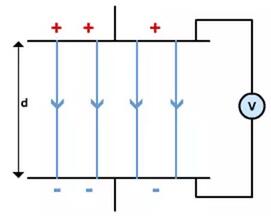为了让大家更好地复习A-level考试,今天为大家讲解A-level物理考试电场与电场力Electric Fields and Forces revision复习要点。希望能够对大家的A-level物理考试有所帮助。
一、 Electric Field Shapes 电场概念及表示
Electric Field
“An electric field is a region in which particles with charge experience a force”
Field Shape Diagrams
We represent electric fields with diagrams that have conventions (or rules) that need to be followed.
For example:
The field lines (and arrows) show the direction of the force that would be felt by a positive charge at that point in the field. Note that unlike gravitational fields, electric fields can attract or repel objects.
The spacing between the lines shows how strong the field is at that point. In this case it's strongest near to the charge because the lines are closest there.
This field is uniform because the spacing between the lines remains the same throughout the field shown. The field lines are parallel and equispaced.
二、 Electric field strength 电场强度
This is defined as the force per unit charge acting at a point in the field. So an equation for it is:

Where:.
E = electric field strength
F = force acting in newtons
q = the charge in coulombs
Units of E: NC-1 or Vm-1 (these are the same thing!!)
(1)匀强电场Uniform Fields
There is one special example you also need to know :

This is a uniform field. The field strength at any point in this field is:

where
V = the pd between the plates
d = the distance separating the plates.
Field strength is a vector - it has direction as well as magnitude.
This is important to remember because in electric fields you can have field strengths acting in different directions due to different signs of charge.
Radial Fields
A particularly useful equation to find field strength around a point charge (note - the first pictures is the field diagram section were point charges) is:

where
Q = the charge causing the field
r = the separation between the charge and the point you are considering
ε = permittivity (see below for notes).
You can also write this as

This shows that:

